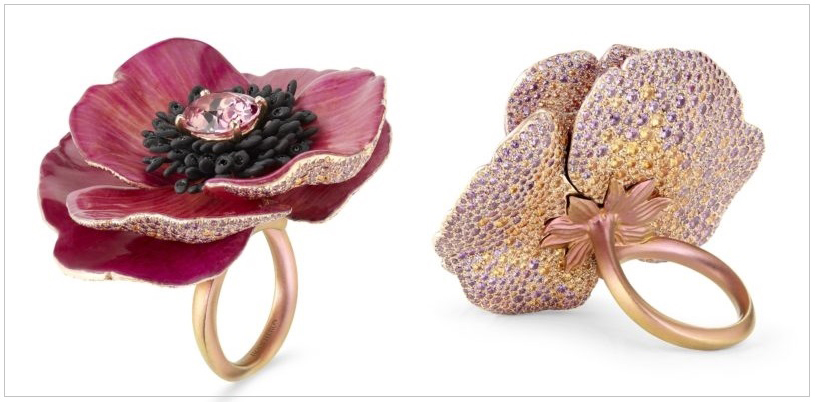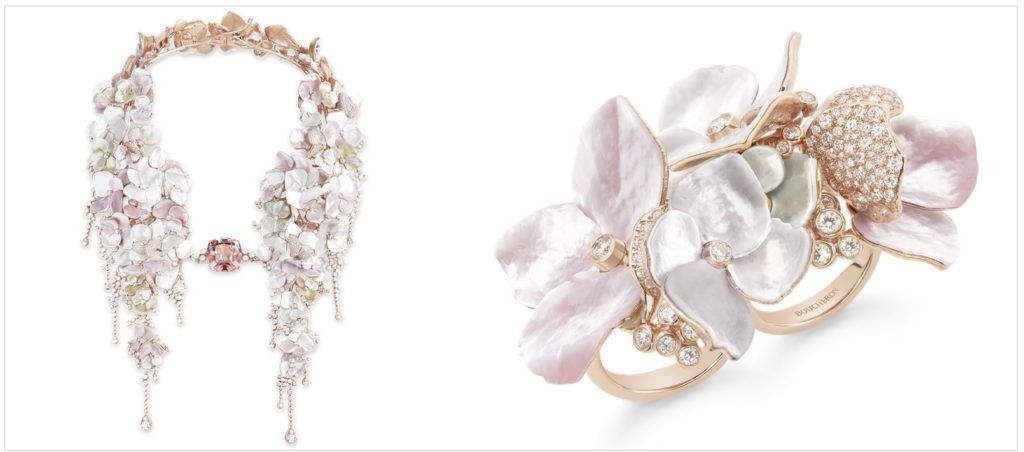This Jeweler Used 3-D Printers and Medical Scanners to Reproduce Nature in Its Pieces
Ivy never looked this bling
Maison Boucheron, a luxury jewelry brand family-founded in 1858 (since purchased by Kering), is celebrating its 160th anniversary with a technologically compelling tribute to nature.
The “Nature Triomphante” collection, showcased in Paris for three days at the start of July, is a tribute to the jeweler’s innovative history, requiring 3-D printers and medical scanners to reproduce the granular characteristics of flora in precise proportions, says Artnet.
Check out the detail on these flower rings, which retail for about $117,300.
“The idea was to produce an exact replica of the flowers with all their natural defects and without any interpretation or improvement by the hand of man,” Boucheron creative director Claire Choisne tells Artnet.
Luckily, even if you can’t afford a ring the cost of a mortgage, nature is free.
The Lierre Givrée piece below came from a real ivy branch, scanned and reproduced in titanium with a 3-D printer. The reproduction was paved with 14,500 diamonds, and porcelain Cacholong opals atop each leaf.
The piece is apparently as light as the ivy itself, and can be worn as a necklace or head ornament. The house says it features the most pavé diamonds of any piece in its history. (Try not to fall down wearing it, though. Those edges must be… sharp.)
The Fleur Graphic below can also be worn multiple ways. The hydrangeas from which it was scanned were reinterpreted Art Deco-style, and the final result features a 5.65-carat Colombian cushion-cut emerald tucked into a pattern of mother-of-pearl and black lacquer chevrons.
A last room in the presentation featured an actual series of rose petals, hydrangeas, poppies and anemones, encased under glass. The flowers were scanned in a medical scanner—down to petals, pistils and stamen—then French environmental artist and “petalist” Claire Boucl removed the petals from their stems using a chemical-free technique that remains a trade secret. They were layered with varnish and metal, protecting them from heat, humidity and moisture. The pistil and stamen were lined with precious stones and metals, respectively.
The collection includes 80 pieces, presented in three chapters: Naturaliste, Surréaliste and Alchimiste. Boucheron is historically seated in Place Vendôme, but this particular construction appeared within the 7 Place Vendôme showrooms, its temporary quarters until the boutique reopens in the autumn.










